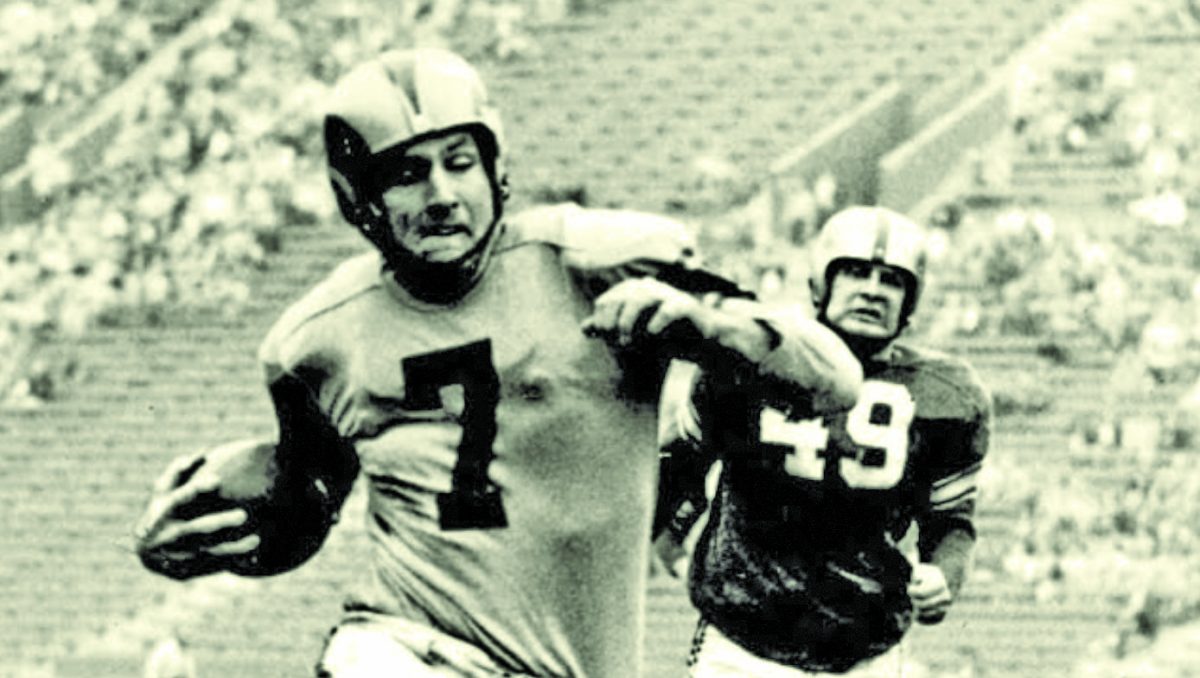Alumni Don Drysdale who graduated in 1954 made it big as a professional baseball player. Bob Waterfield, a member of the class of 1938, made it to the NFL as a quarterback for the Los Angeles Rams. Norm Miller, who graduated in 1962, played as an outfielder in Major League Baseball for the Houston Astros.
All of these amazing athletes who made it to the big leagues all came from one common place, Van Nuys High School.
Student athletes tend to dream big, aspiring to become the greatest at their sport. Some move closer to that dream with athletic offers while some set realistic goals, letting the future unfold on its own.
However, according to the National Collegiate Athletic Association (NCAA) website, only around six percent of high school athletes in the United States go on to compete at the collegiate level.
Senior golfer at Van Nuys High School Isaiah Kim hopes to go to the professional level after graduating.
He was introduced to golf by his uncle and began taking lessons at the age of six.
His first step toward that dream is finding a college where he can play collegiate golf and continue developing his game.
Kim has received offers from Bellevue University in Saint Louis and Central Christian University in Kansas City.
But there’s a difference between getting an offer and getting a good offer.
The NCAA notes that while many athletes receive offers from lower-division schools, these often don’t include full scholarships or come from top-tier programs.
A good offer often includes a full scholarship from a strong program; something far harder to get.
“There’s such a small percentage of collegiate athletes that actually make it to the pro levels,” Kim said.
According to the NCAA, about 98 percent of college athletes do not become professionals and instead pursue other careers after graduation.
“It is so tough to try and make it to a pro in any sport,” Kim said.
Because of this, Kim has developed backup plans in case he is unable to go pro.
“I want to become a mental coach in the golf industry, a history teacher or some type of psychologist,” Kim said.
A mental golf coach helps golfers develop the psychological skills and strategies necessary to perform at their best.
Backup plans offer a safety net in the highly competitive world of professional sports.
“I’m just trying to figure out what’s best in the next 10 years or so,” Kim said.
Senior Jeremy Rivas, captain and point guard of the boys basketball team, also dreams of pursuing his sport in college.
“My plans after high school are to try out for a team at a community college or see if I can make it on a California State University team,” Rivas said.
He hasn’t gotten any offers but he hopes to make it on the basketball team of whichever college he ends up going to. Rivas has a strong support system, created from his genuine love for basketball and his father’s encouragement.
“My dad wants me to go play basketball in college,” Rivas said. ”It’s his dream as well as mine.”
When a sport is both the athlete’s and parent’s dream, it can be a powerful motivator— and a source of pressure.
Rivas also has a career plan outside of basketball.
“I want to become a dental hygienist and make some money off that or get rich off of stocks and trading,” Rivas said.
Like Kim, Rivas is set on pursuing his sport but is also ready to transition into another career if it doesn’t work out.
“For many people this is their last year playing basketball because they don’t have the skill or determination to take it to another level,” Rivas said.
Student-athletes might not pursue spots on collegiate teams because they think their current abilities can’t meet the standards required, lack passion and interest or simply don’t want to commit.
“I feel like I can play at the college level,” Rivas said.
His confidence and determination won’t allow him to step away from the game just yet. He believes he has the opportunity to keep going, and so he will.
“I’m not giving it up,” Rivas said.



